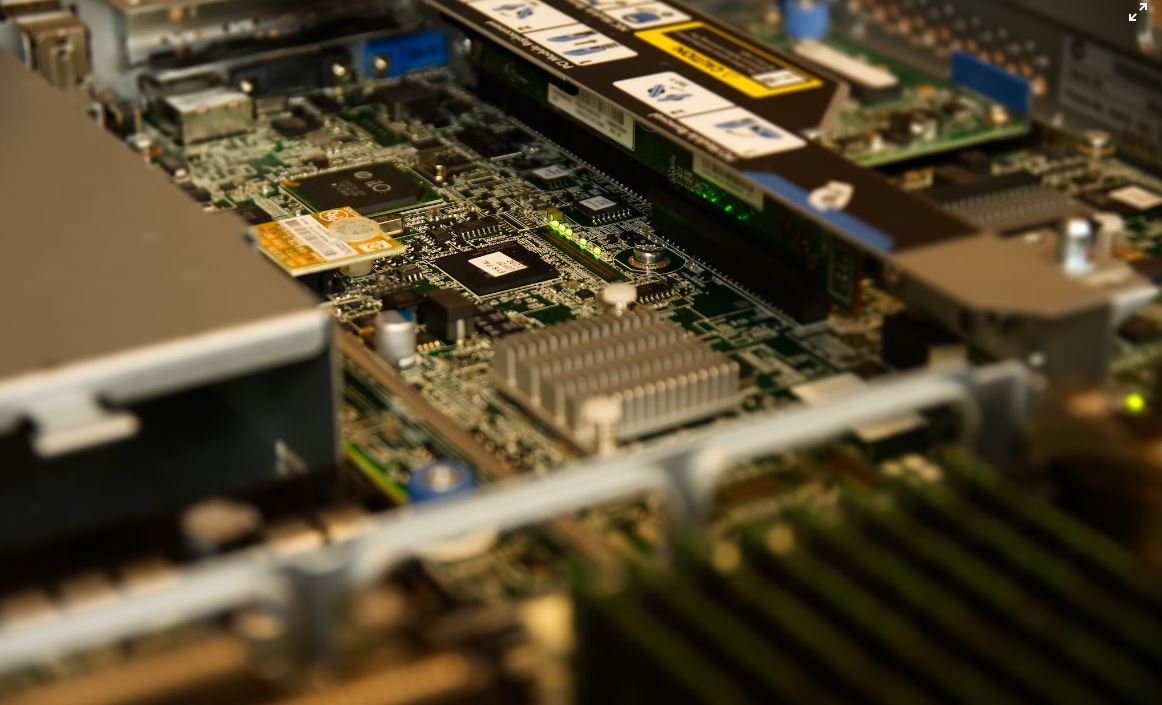Tesla Model Y OBD Port
The Tesla Model Y is a popular electric SUV known for its advanced technology and impressive performance. One important feature of the Model Y is its OBD (On-Board Diagnostics) port, which provides valuable information about the vehicle’s performance and health. In this article, we will explore the Tesla Model Y OBD port in detail and understand its significance for Tesla owners.
Key Takeaways
- The OBD port in the Tesla Model Y provides access to important diagnostic information.
- It is located on the driver’s side, near the dashboard, for easy accessibility.
- Tesla owners can use third-party OBD devices to access additional features and data.
Understanding the Tesla Model Y OBD Port
The OBD port in the Tesla Model Y is a standard feature that allows owners to access diagnostic information about their vehicle. *This port is typically used by service technicians to diagnose and troubleshoot any issues with the vehicle.* It provides real-time data about the vehicle’s performance, including battery health, charging status, and overall system diagnostics. The OBD port is an essential tool for maintenance and monitoring of the Tesla Model Y.
Benefits of Accessing the OBD Port
Accessing the Tesla Model Y OBD port opens up a world of possibilities for owners. *With the help of third-party OBD devices, owners can unlock additional features and data that are not available through the Tesla mobile app.* These devices can provide insights into driving behavior, energy consumption, and even enable advanced features like enhanced autopilot capabilities. Moreover, accessing the OBD port allows owners to perform advanced diagnostics and monitor the health of various vehicle components, ensuring optimal performance and maintaining the longevity of the vehicle.
Using Third-Party OBD Devices
There are several third-party OBD devices available in the market that are compatible with the Tesla Model Y. These devices can be easily plugged into the OBD port and provide additional functionalities. Some popular features of third-party OBD devices include:
- Real-time data monitoring: Get instant information about battery levels, energy usage, and system performance.
- Driving behavior analysis: Track driving habits, such as acceleration, braking, and speed, to optimize efficiency and improve safety.
- Advanced vehicle diagnostics: Identify potential issues and receive detailed error codes for prompt troubleshooting.
Tesla Model Y OBD Port Specifications
| Port Type | Location | Compatibility |
|---|---|---|
| OBD-II Port | Driver’s Side, near the dashboard | Tesla Model Y, other OBD-II compliant vehicles |
*The OBD-II port in the Tesla Model Y follows the industry-standard and is compatible with other OBD-II compliant vehicles.* It is located on the driver’s side, near the dashboard, for easy accessibility. The port allows seamless connection with third-party OBD devices, giving owners ample opportunities to enhance their driving experience.
Conclusion
The Tesla Model Y OBD port plays a crucial role in accessing diagnostic information and unlocking additional features for owners. It provides valuable insights into the vehicle’s performance and allows for advanced diagnostics. *Exploring the capabilities of the OBD port and utilizing third-party OBD devices can greatly enhance the Tesla Model Y ownership experience.*

Common Misconceptions
1. Tesla Model Y OBD Port is the Same as in Traditional Cars
One common misconception about the Tesla Model Y is that it has an OBD (On-Board Diagnostics) port similar to that found in traditional gasoline-powered cars. However, this is not the case. Tesla vehicles, including the Model Y, do not have a standard OBD port that can be accessed with a generic OBD scanner.
- Tesla vehicles have their own proprietary diagnostic system.
- Access to vehicle data and diagnostics is regulated through the Tesla mobile app.
- Third-party accessories and adapters may enable limited access to certain vehicle data.
2. OBD Scanners Can Retrieve Vehicle Information from a Tesla Model Y
Contrary to popular belief, generic OBD scanners cannot retrieve vehicle information from a Tesla Model Y. While OBD scanners can read and diagnose issues in traditional cars, Tesla’s unique system requires specialized tools or software to access the vehicle’s data and diagnostics.
- Specialized software, like Tesla’s own diagnostic tools, is needed to access detailed vehicle data.
- Third-party diagnostic tools may provide limited access to certain vehicle information.
- Standard OBD scanners do not work with Tesla vehicles due to the different on-board system architecture.
3. Lack of OBD Port Affects Vehicle Servicing and Maintenance
Another misconception is that the absence of a conventional OBD port in the Tesla Model Y hinders vehicle servicing and maintenance. On the contrary, Tesla has developed its own network of service centers and Tesla-certified technicians that effectively address servicing and maintenance needs.
- Tesla service centers have advanced diagnostic tools specifically designed for their vehicles.
- Remote diagnostics and over-the-air software updates streamline servicing and maintenance processes.
- Tesla’s proprietary system allows for efficient troubleshooting and resolution of issues without an OBD port.
4. Tesla Model Y OBD Port Enables Unauthorized Modifications
Some may believe that the absence of an OBD port in the Tesla Model Y makes it easier to modify the vehicle without detection. However, Tesla’s built-in security features and extensive monitoring systems make it challenging to perform unauthorized modifications without detection.
- Tesla vehicles have robust security systems that monitor and detect unauthorized modifications.
- Without proper access and authorization, modifications can cause system failures and void warranties.
- Tesla’s over-the-air update capability allows for software enhancements and security patches.
5. Lack of OBD Port Impacts Insurance and Telematics Tracking
Some individuals may falsely assume that the absence of an OBD port in the Tesla Model Y affects insurance tracking and telematics data. However, Tesla uses its own proprietary data collection methods and technology to gather necessary information for insurance purposes and telematics tracking.
- Tesla’s built-in telematics system provides detailed data for insurance tracking and analysis.
- Insurance companies commonly have partnerships with Tesla to access data required for policies.
- The lack of a traditional OBD port does not impede accurate data collection or sharing.

Tesla Model Y OBD Port – Frequently Asked Questions
What is an OBD port and where is it located in the Tesla Model Y?
The On-Board Diagnostics (OBD) port is a standard connector used in vehicles to access diagnostic information. In the Tesla Model Y, the OBD port is located underneath the dashboard on the driver’s side.
Can I use the OBD port in my Tesla Model Y for diagnostics and troubleshooting?
No, Tesla vehicles, including the Model Y, do not have official support for OBD tools or diagnostics. Tesla uses its own proprietary systems for diagnostics and troubleshooting.
Is it possible to use third-party OBD scanners with the Tesla Model Y?
No, Tesla vehicles do not support third-party OBD scanners as they do not use the standard OBD-II protocol. Tesla uses its own protocols and software for diagnostics.
What are the alternative ways to access diagnostic information in the Tesla Model Y?
Tesla provides a comprehensive suite of remote diagnostic tools and features through their in-car software and mobile app. These tools allow owners to monitor and troubleshoot their vehicles without the need for an OBD scanner.
Will using third-party OBD devices void the warranty of my Tesla Model Y?
Modifying or tampering with the OBD port or using unauthorized third-party devices can potentially void the warranty of your Tesla Model Y. It is always recommended to use official Tesla diagnostic tools and services for any troubleshooting or maintenance needs.
Can I use the OBD port in the Tesla Model Y for vehicle tracking or other non-diagnostic purposes?
No, the OBD port in the Tesla Model Y is not designed for vehicle tracking or other non-diagnostic purposes. It is primarily used for official diagnostics and should not be modified or tampered with.
Are there any community-developed tools or software available to access the Tesla Model Y’s diagnostic data?
While there may be community-developed tools or software claiming to access Tesla’s diagnostic data, it is important to note that using unauthorized third-party tools or software can potentially damage your vehicle or compromise its security. It is recommended to rely on official Tesla resources for any diagnostic needs.
Can I unlock additional features or functionalities through the OBD port in the Tesla Model Y?
No, the OBD port in the Tesla Model Y does not provide access to unlock additional features or functionalities. Tesla’s software updates and upgrades are provided through official channels and cannot be modified externally.
Is there any official documentation or support provided by Tesla about the OBD port in the Model Y?
Tesla does not provide official documentation or support specifically for the OBD port in their vehicles, including the Model Y. Any diagnostic or support-related inquiries should be directed to Tesla’s official customer support channels.
What should I do if I encounter any issues or need assistance with the diagnostics of my Tesla Model Y?
If you encounter any issues with the diagnostics or require assistance with your Tesla Model Y, it is recommended to contact Tesla’s official customer support for guidance. They will be able to provide the necessary support and troubleshooting steps.




